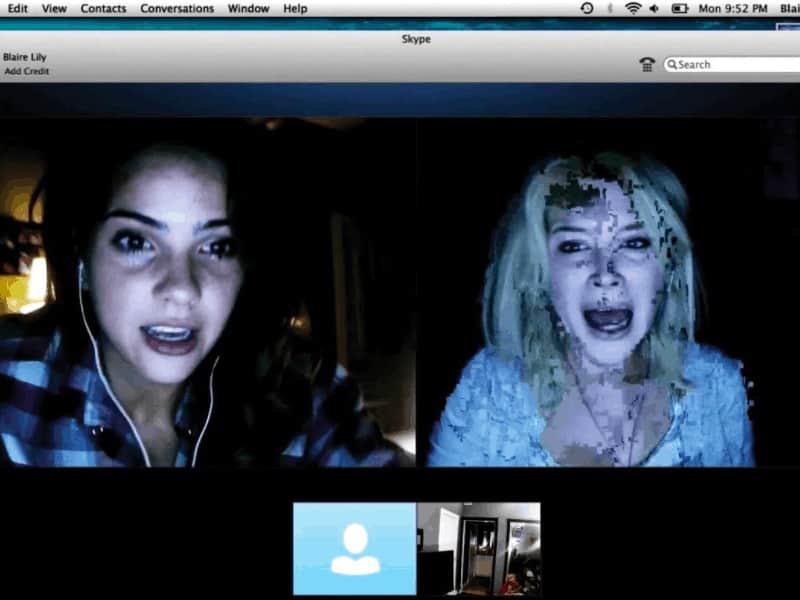
Welcome to The Queue — your daily distraction of curated video content sourced from across the web. Today, we’re watching a video essay about what the 2014 cyber horror film Unfriended can teach us about André Bazin’s concept of cinematic realism.
Levan Gabriadze‘s 2014 horror film Unfriended ticks two different boxes when it comes to “challenging cinema.” But, if you’re the right kind of film freak, that’s exactly what you love about it.
If you’ve been hanging around the horror sections of your local streaming services lately, you’ll have noted the arrival of a new, ooky spooky subgenre that brings found footage into the digital age. The action of desktop horror films takes place entirely within a computer screen, emulating technological immersion with dragging cursors, alarming pop-ups, and frantic scrolling. Desktop horror films include the likes of The Collingswood Story (2006), The Den (2013), Ratter (2015), and most recently, Host (2020).
Unfriended follows a group of six teens who receive a Skype message from a classmate who committed suicide the previous year. Shenanigans ensue, but I dare not spoil the film’s haunting surprises. Rather notoriously, Unfriended thoroughly commits to the limitations of its desktop premise, cluttering the screen with files, windows, and oodles and oodles of terrifyingly tense dead time.
Personally, I’ve always had a bit of a bias against desktop films, in part because they tend to stink of a kind of “New Media” gimmickry. However, as the video essay below lucidly demonstrates, Unfriended is up to something else, adopting the visual language of the desktop to update and transform the classical aesthetics of realist cinema, from long takes to deep focus, to spectatorial freedom. Who’d have thought? A desktop horror film is kind of the perfect way to learn about film theory.
Watch “Unfriended (2014) and Andre Bazin’s Realism“:
Who made this?
This video essay about Unfriended and André Bazin’s film theory is by Jordan Schonig, who holds a Ph.D. in Cinema and Media Studies from the University of Chicago. They are a Film Studies lecturer and make video essays on, what else, film. You can subscribe to Schonig on YouTube here. And you can follow them on Twitter here.
More Videos Like This
- Here’s another taste of Schonig’s work, on how to read pattern as form in Alfred Hitchock’s Rear Window.
- And here’s Schonig on how Alfonso Cuarón‘s Gravity walks the line between realistic and believable sound design.
- Oh, and of course: here’s Schonig on how Unfriended weaponizes the anxiety of buffering and loading screens to horrific effect.
- Here’s The Queue favorite Ryan Hollinger on how two different films, Pulse and FeardotCom, epitomize the early days of the internet horror sub-genre.
- With respect to the other desktop-based horror film mentioned in the video essay above, here’s Lessons from the Screenplay on how Searching re-figures the thriller format.
Related Topics: Horror, The Queue

